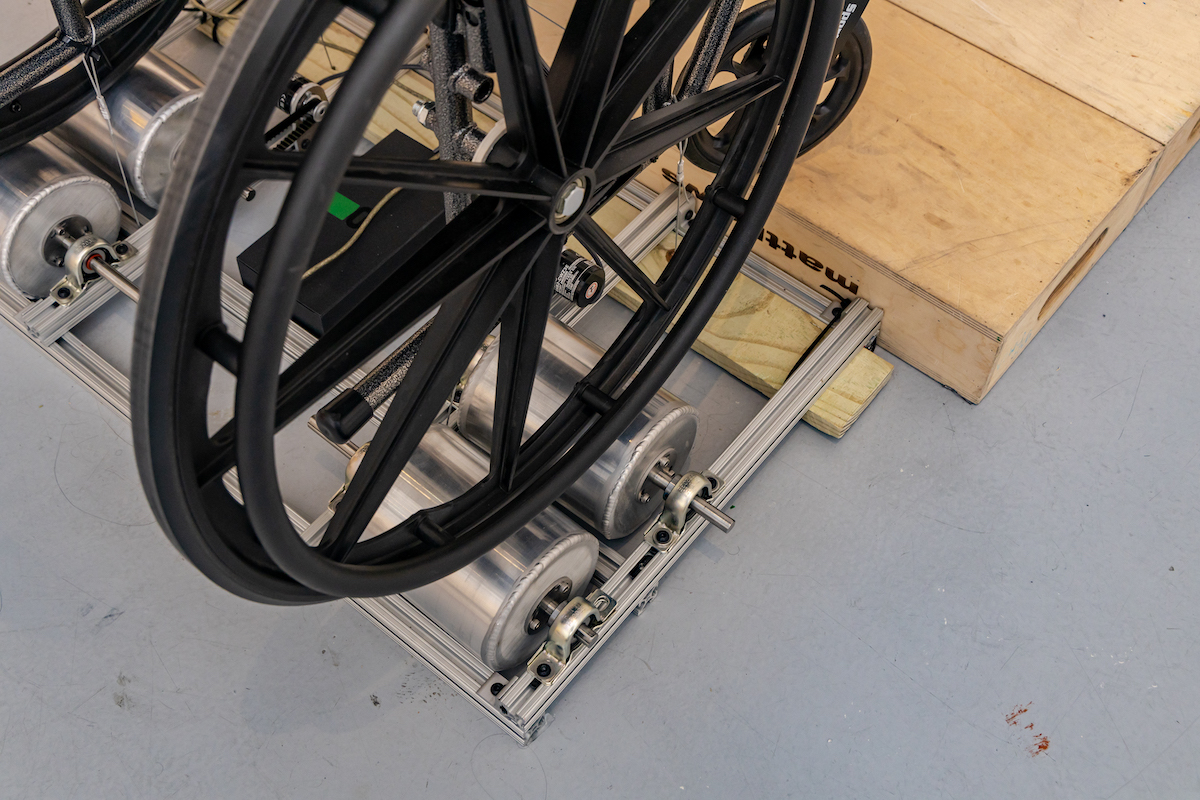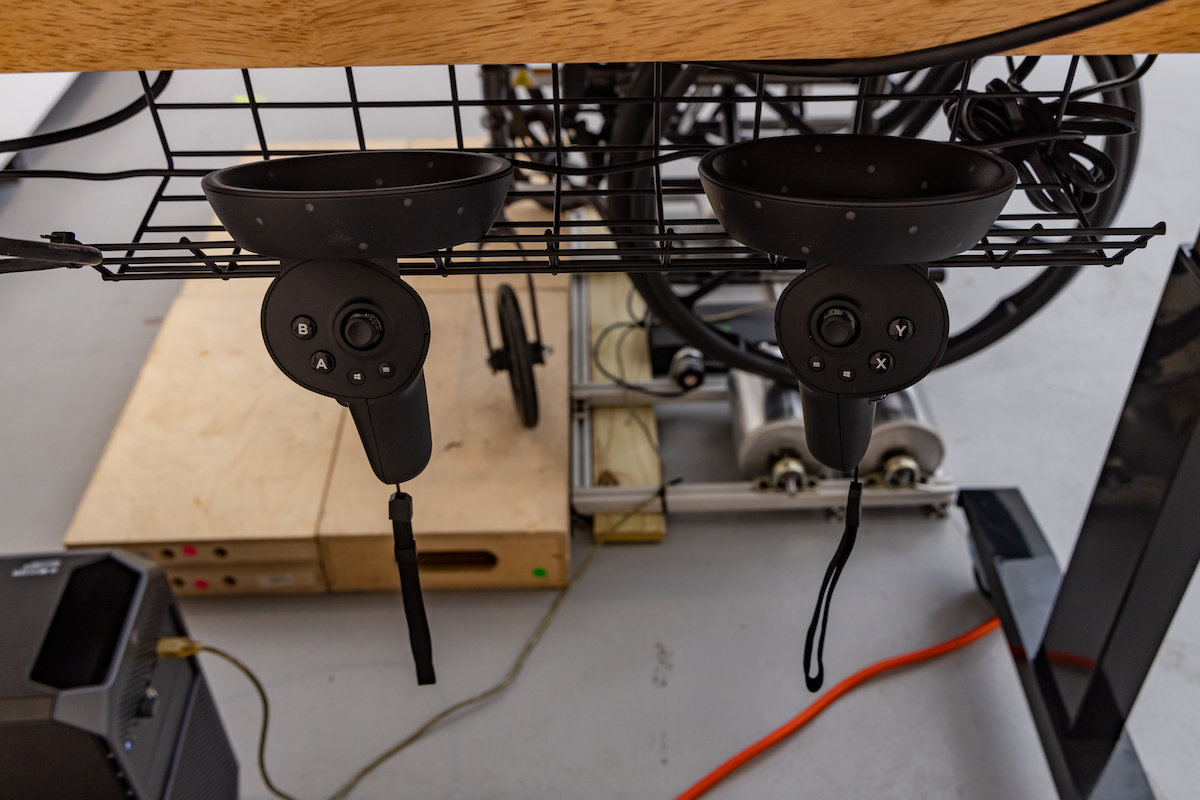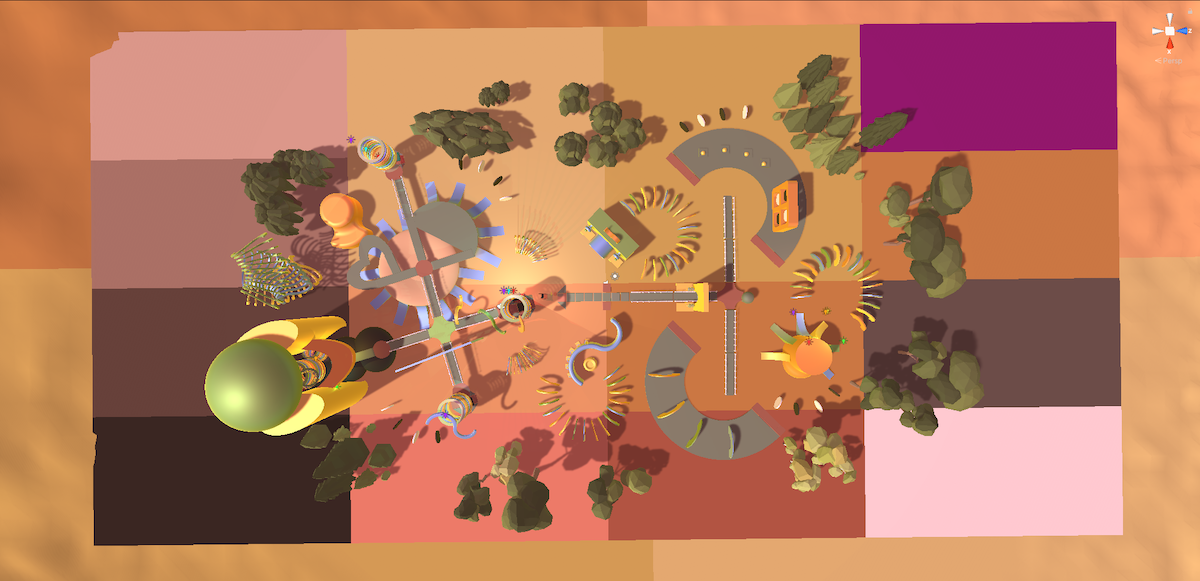Senior Thesis Exhibition 2022
Abeyaz Amir
Chia Amisola
Brice Bai
Merritt Barnwell
Onora Best
Maya Boateng
Ekow Buadu
Anne Chen
Mila Colizza
Alara Degirmenci
Ivory Fu
Pilar Galvan
Matt Herriot
Sidney Hirschman
Neo Khan
Daniel Kyungjae Lee
Sunnie Liu
Laura Padilla Castellanos
Anya Pertel
Sarah Saltzman
Sol Thompson
Julie Tran
Aliaksandra Tucha
Sofia Turner
Xavier
Jieun Yu
Senior Thesis Exhibition 2022
Abeyaz Amir
Chia Amisola
Brice Bai
Merritt Barnwell
Onora Best
Maya Boateng
Ekow Buadu
Anne Chen
Mila Colizza
Alara Degirmenci
Ivory Fu
Pilar Galvan
Matt Herriot
Sidney Hirschman
Neo Khan
Daniel Kyungjae Lee
Sunnie Liu
Laura Padilla Castellanos
Anya Pertel
Sarah Saltzman
Sol Thompson
Julie Tran
Aliaksandra Tucha
Sofia Turner
Xavier
Jieun Yu
Brice Bai
Statement People’s perceptions of and ability to interact with their environment, whether physical or virtual, are not universally the same. My work explores finding connections amongst those differences and creating new experiences from them. It analyzes how people navigate the world according to its various interfaces, playing close attention to the ways that design impacts an individual’s experience. For the past year, my thesis has been an exploration of navigating the built virtual environment. I examined accessibility in virtual reality (VR) by utilizing the wheelchair as its new concrete interface. Being part of the Center for Collaborative Arts and Media’s (CCAM) Wheelchair Interface Project, my thesis contributes to their ongoing investigation of how wheelchair-bound users explore virtual worlds and why their experience calls for a new interactive interface that will improve experiences not only for them, but for all VR users. I created and 3D-modeled a design system that follows Americans with Disabilities Act regulations for a modular-unit-based playground. I took these units to develop the playscape in Unity with the rapid prototyping tool, the Verb Collective. The culmination of my designs is the experience one has navigating through this interactive VR playground in the wheelchair. It reimagines what mobility, accessibility, and delightful engagement in VR looks like for anyone.
Student

wheelchair, vr, ramps, people, world, wheelchair users, headset, thinking, project, experience, disability studies, guess, roll, interactions, space, question, accessibility, environment
“I have a wheelchair, there's this platform that allows you to roll the wheelchair, and then stay stationary, but then it detects the traction and force and everything of the wheels. So that when you roll in it, you have your headset on, you're basically just navigating through this world, as you're going through the actual world.”
“I wanted to design an environment that was, one, functional for a physical therapy sense…As well as create just a very fun and whimsical environment. So I first developed a design system to make this; I was inspired by playgrounds by Noguchi. And in designing the system, I was also assisted by Alara, actually, who is also part of this project, who helped think of the guidelines for the different types of shapes and the color palette.”
“I did not intend for this to be a game, in the traditional sense. Like, there's no point system, there's no, 'you live or die' – unless you just want to start over because you fell over and can't move. But the point of this experience is really to just interact with the different parts of this environment, and see what kind of reactions those interactions gain…I think just kind of promoting that feeling of whimsy around with what seem to be very simple interactions.”
“I listen to a lot of Kpop I'm part of a KPOP Dance Group on campus. Oh, yeah. So that just comes with I guess the territory of being a part of that.”
“I think honestly, I just want to relax a little. I don't know if I really plan to make many things. I kind of want to take advantage of this time to just be able to absorb a lot of things too, because I'm sure once I start working, I'm going to be very distracted and not being able to pay attention to the world around me as much.”






 Playscape for a Wheelchair-based Concrete Interface
Playscape for a Wheelchair-based Concrete Interface